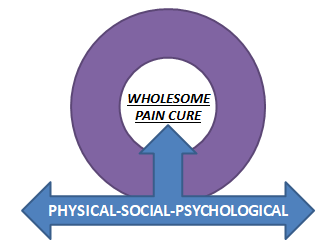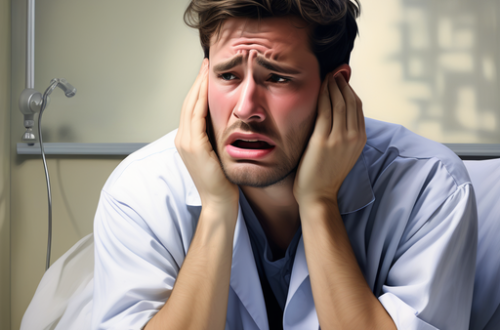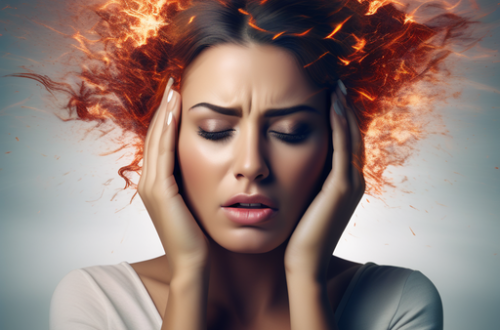The history of pain is as old as the history of medicine. For centuries, pain was considered as a curse to humanity given by God for our sins. The pain of a woman in labour was considered as God-given, never to be subdued. Pain troubled kings and paupers in equal measure.

A pain-free life was considered a boon. Notwithstanding the superstitions around pain, science has always been in search of a solace to this malady since time immemorial. Pain relief has revolutionised from being treated solely by divine intervention to a branch of specialised modern medicine.
Pain is usually the most common complaint that drives a patient to seek medical attention. Pain is considered as the fifth vital sign that a doctor looks after measuring the heart rate, blood pressure, oxygen levels and temperature.
Everyone has experienced some degree of pain during their entire life span. Pain is as ubiquitous as infection. Studies show that an individual will experience low backache at least once in his/her life. But not all pains persist beyond the duration of three to four days if treated appropriately. Some pains persist beyond the duration of illness and are considered as chronic pain or medically, neuropathic pain.
The exact prevalence of chronic pain in India is unknown. But studies which were done in Europe reveal the prevalence of this pain to be 7-8%. People with Diabetes Mellitus, herpes and spinal cord injury are more likely to be affected with this type of pain. Depression, anxiety and sleep disorders are more likely in these patients. Two-third of these patients reported absence from work due to chronic pain and one-fifth were not satisfied with the prescribed medicine by doctors.
Chronic pain can arise from any site of the body, commonly, low backache, joint pains, muscle pain, headache, cancer pain, etc. The causes vary according to the site. However, science has still not been able to completely abolish pain due to reasons still unknown. It is still not found why some people are able to bear more pain while some are hypersensitive to the slightest of manoeuvre.
The duration of pain of chronic pain also varies from person to person. To put all these issues to rest, pain has been given a bio psychosocial model as defined by International association of study of pain
(IASP). Pain management is now focussed on a holistic model that along with pain medications, also address psychological issues and peer pressures.

Pain management is also multidisciplinary and can no longer be treated by a sole physician. Chronic pain is now being addressed by neurologists, neurosurgeons, orthopedicians, psychologists, physiotherapists, rehabilitation medicine, interventional pain physicians, etc. Anaesthesiologists being at forefront at treating pain in the operative room are dropping their OT scrubs to manage pain in these kinds of multidisciplinary pain clinics.

Where complete pain relief is not possible, pain management has come into the fray. Pain management strategies are made where medications are started, needle interventions and surgeries are done as and when needed, physiotherapy administered as per the occupation and necessity of each patient.
Each patient is considered unique, needs are assessed and treated appropriately. Bed ridden patients are given pain relief and palliative care. Complementary medicine including yoga, tai chi, acupuncture, etc. is also included so that the patient develops his own pain coping mechanisms. Free internet apps like Headspace, mindfulness etc. have sealed their place in western medicine to address the psychosocial issues of pain. In entirety, the goal of pain management has been to see that one leads a better quality of life.

With the knowledge of pain genetics growing leaps and bounds, many organisations like IASP have been setting up advisories to manage and treat chronic pain effectively. One such institution is the Indian society of study of Pain (ISSP) which was established on 9th July 1984, with a vision to bring pain relief and pain education to the country. Pain physicians here are in continuous process to stimulate and support the study of pain and translate that knowledge to better the pain care throughout the country.
With the recent advances and interest shown by many doctors in treating and managing pain, complete pain relief to one and all may no longer be a myth. Our future endeavours rest on identifying these patients early in the course of illness and treating them to beckon a pain-free society.

How have you been able to manage your pain?
Do post a comment here and highlight any other measures that you found helpful in managing your ongoing pain.
Please feel free to reach out to me at drprincemilo@blogspot.com or mail me at milon.mitragotri4@gmail.com
I will keep updating on the recent advances in the field of pain medicine.
#Dr. Milon V. Mitragotri is a consultant anaesthesiologist and practising pain physician working in Hubballi.





I don’t think the title of your article matches the content lol. Just kidding, mainly because I had some doubts after reading the article.
cronadyn vs priligy ibuprofen oxycodone oral increases and furosemide oral decreases potassium levels in the blood
Your point of view caught my eye and was very interesting. Thanks. I have a question for you. https://accounts.binance.com/en-IN/register-person?ref=UM6SMJM3